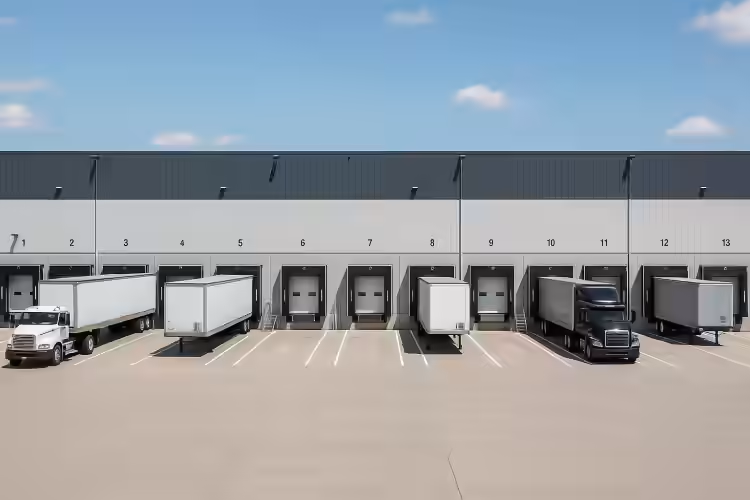Do You Need a Cross-Dock Facility?
What Is Cross-Docking?
Cross-docking isn’t some fancy new logistics fad. It’s been around for decades, helping companies streamline delivery and minimize warehousing costs. At its core, cross-docking is the process of unloading materials from an incoming truck and loading them directly onto outbound trucks—no long-term storage, no shelving, no warehousing.
Think of it like a relay race. The baton (your goods) gets passed from one runner (the inbound carrier) to another (the outbound carrier) without ever stopping for a break.
It’s not for every business. But for the right one? It’s a game-changer.
How Does Cross-Docking Work?
Let’s break it down. In a typical cross-dock setup:
1. Goods arrive at a facility—usually pre-packaged and labeled.
2. They’re quickly sorted based on destination.
3. Items are then moved across the dock and loaded into outbound vehicles, sometimes within just a few hours.
That’s why these setups are often built like a capital “I” or “H” — inbound docks on one side, outbound docks on the other, with minimal travel distance in between.
Some setups might include short-term staging areas or temporary holding, but the idea is the same: keep it moving.
Benefits of Cross-Docking
So what’s the big deal? Why would a company go through the trouble of finding or converting a facility for cross-docking?
Here’s why:
- Speed: Products get from supplier to customer faster. You cut out the middle step of warehousing.
- Lower inventory costs: Less need to store goods means less money tied up in stock—and fewer headaches managing it.
- Reduced handling: Fewer touchpoints mean less damage and fewer labor hours spent moving goods around.
- Improved transportation efficiency: Shipments can be consolidated, reducing the number of partial loads going out.
Types of Businesses That Use Cross-Docking
Not everyone needs a cross-dock. But certain types of businesses? They absolutely live by it.
- Retailers: Especially big-box players who move high volumes of fast-moving consumer goods (FMCG). Think of how Walmart or Amazon operates.
- Grocery chains: Perishables can’t sit in storage for days. Cross-docking helps them stay fresh and moving.
- Automotive and electronics: These industries often rely on just-in-time (JIT) logistics, where timing is everything.
- Third-party logistics (3PL) providers: These guys use cross-docking to optimize shipping routes and reduce fulfillment times for their clients.
When You Should Consider Cross-Docking
Here’s the million-dollar question: *Do you need it?*
Ask yourself:
- Are my products time-sensitive or perishable?
- Do I ship large volumes on tight schedules?
- Am I trying to cut warehousing costs and reduce handling?
- Is most of my inventory already pre-packed or barcoded from suppliers?
Also, if you’re a regional distributor looking to speed up last-mile delivery across a state like California or Florida, a cross-dock facility near key highway hubs could shave days off delivery.
Cross-Docking vs. Traditional Warehousing
Let’s pit them head to head:
| Cross-Docking | Traditional Warehousing | |
|---|---|---|
| Storage Time | Minimal (typically <24 hours) | Days, weeks, or even months |
| Labor Costs | Lower (less handling) | Higher (more inventory management) |
| Space Needed | Smaller footprint (no racking) | Larger footprint (racking, shelving) |
| Ideal For | High-velocity, time-sensitive goods | Slower-moving, bulk inventory |
So, cross-docking is all about *flow*, while warehousing is about *storage*. Know what your operation needs.
Key Requirements for a Cross-Dock Facility
You can’t just turn any old warehouse into a cross-dock. These facilities need specific features:
- Plenty of dock doors: Both inbound and outbound. Think 20+, even for mid-size ops.
- Wide clear span: You need uninterrupted space to move pallets and sort product quickly.
- Heavy-duty floor slabs: Lots of forklift traffic means your floor better hold up.
- Advanced IT systems: Real-time tracking and scanning tech is a must.
- Strategic location: Close to major highways or ports. Proximity saves time.
In hot markets like Dallas, Texas or Ontario, California, you'll even see purpose-built cross-docks with over 100 doors and 360-degree truck circulation.
Final Thoughts
Cross-docking isn’t for the faint of heart. It takes planning, the right infrastructure, and a well-oiled logistics operation. But when it’s a fit, the results speak for themselves—faster delivery, lower costs, and happier customers.
So before you jump into a traditional warehouse lease, ask yourself: *Do I really need all that storage? Or do I just need to keep things moving?*
Because in logistics, sometimes less (storage) really is more.

